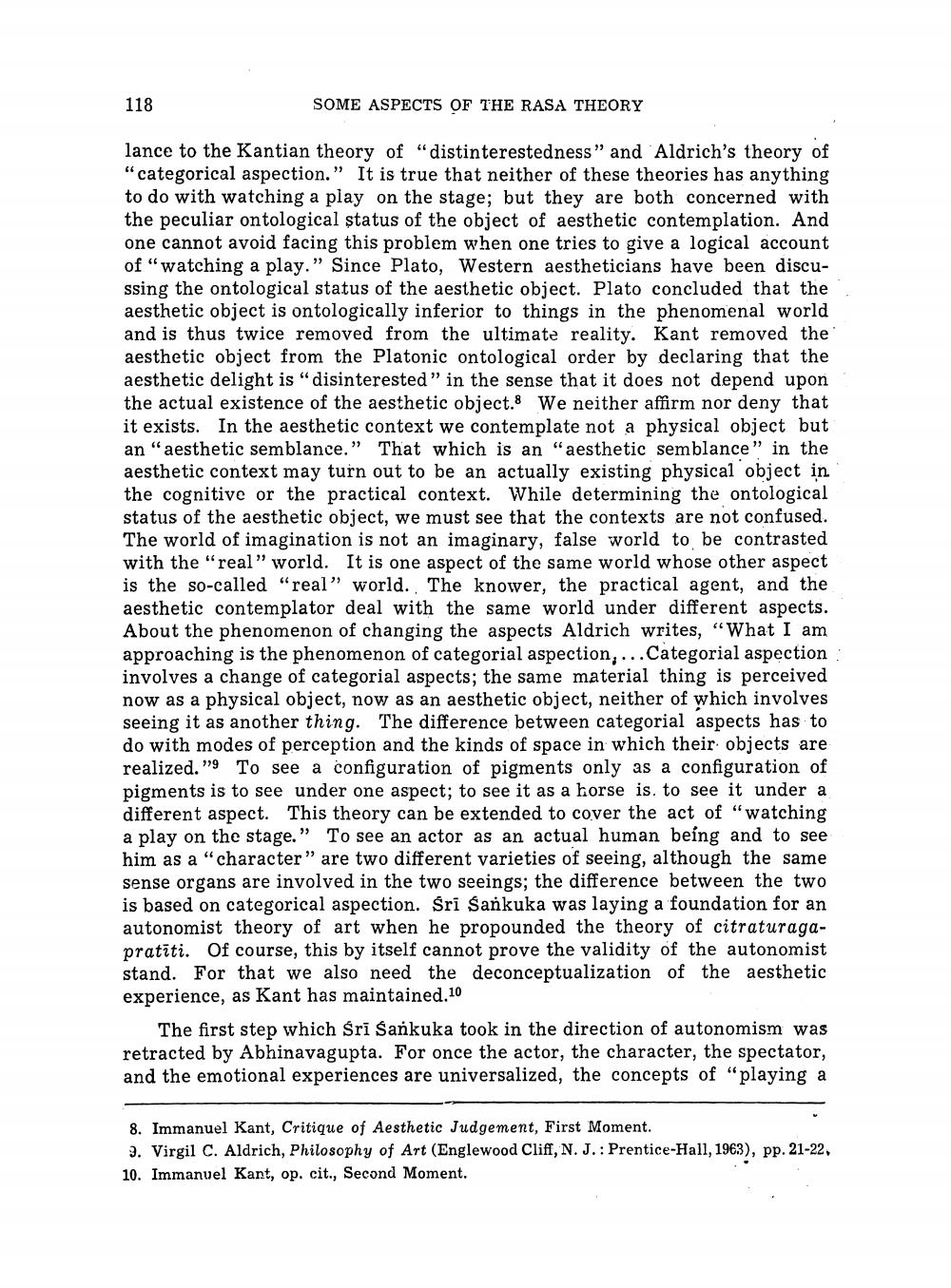________________
118
SOME ASPECTS OF THE RASA THEORY
lance to the Kantian theory of "distinterestedness” and Aldrich's theory of "categorical aspection.” It is true that neither of these theories has anything to do with watching a play on the stage; but they are both concerned with the peculiar ontological status of the object of aesthetic contemplation. And one cannot avoid facing this problem when one tries to give a logical account of "watching a play." Since Plato, Western aestheticians have been discussing the ontological status of the aesthetic object. Plato concluded that the aesthetic object is ontologically inferior to things in the phenomenal world and is thus twice removed from the ultimate reality. Kant removed the aesthetic object from the Platonic ontological order by declaring that the aesthetic delight is "disinterested" in the sense that it does not depend upon the actual existence of the aesthetic object. We neither affirm nor deny that it exists. In the aesthetic context we contemplate not a physical object but an "aesthetic semblance." That which is an "aesthetic semblance" in the aesthetic context may turn out to be an actually existing physical object in the cognitive or the practical context. While determining the ontological status of the aesthetic object, we must see that the contexts are not confused. The world of imagination is not an imaginary, false world to be contrasted with the "real" world. It is one aspect of the same world whose other aspect is the so-called "real" world. The knower, the practical agent, and the aesthetic contemplator deal with the same world under different aspects. About the phenomenon of changing the aspects Aldrich writes, “What I am approaching is the phenomenon of categorial aspection,... Categorial aspection : involves a change of categorial aspects; the same material thing is perceived now as a physical object, now as an aesthetic object, neither of which involves seeing it as another thing. The difference between categorial aspects has to do with modes of perception and the kinds of space in which their objects are realized." To see a configuration of pigments only as a configuration of pigments is to see under one aspect; to see it as a horse is. to see it under a different aspect. This theory can be extended to cover the act of "watching a play on the stage." To see an actor as an actual human being and to see him as a "character" are two different varieties of seeing, although the same sense organs are involved in the two seeings; the difference between the two is based on categorical aspection. Sri Sankuka was laying a foundation for an autonomist theory of art when he propounded the theory of citraturagapratiti. Of course, this by itself cannot prove the validity of the autonomist stand. For that we also need the deconceptualization of the aesthetic experience, as Kant has maintained.10
The first step which Sri Sankuka took in the direction of autonomism was retracted by Abhinavagupta. For once the actor, the character, the spectator, and the emotional experiences are universalized, the concepts of "playing a
8. Immanuel Kant, Critique of Aesthetic Judgement, First Moment. 3. Virgil C. Aldrich, Philosophy of Art (Englewood Cliff, N. J.: Prentice-Hall, 1963), pp. 21-22 10. Immanuel Kant, op. cit., Second Moment.




